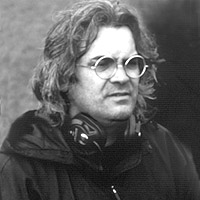 There are two ways to approach this story: One would be to just do it from the 9/11 angle, as this is the second film to be explicitly about 9/11 (the first, by dint of being announced first, is Oliver Stone’s untitled Port Authority cop movie). The other would be to come at the story from the Watchmen angle.
There are two ways to approach this story: One would be to just do it from the 9/11 angle, as this is the second film to be explicitly about 9/11 (the first, by dint of being announced first, is Oliver Stone’s untitled Port Authority cop movie). The other would be to come at the story from the Watchmen angle.
It’s tempting to come from the Watchmen angle, but we’ll get to that at the end. Greengrass, the director who divided the cinema audience into Dramamine and non-Dramamine with The Bourne Supremacy, will be helming a movie about Flight 93, the plane that crashed in a field on 9/11.
The film, to be called Flight 93, will take place in real time, and will begin when the plane takes off and is hijacked. It will then tell the story of the passengers who discovered that two other planes had been rammed into the World Trade Center and that their plane was headed to Washington DC, and the action they took which resulted in the flight being crashed in a lonely field.
It’s a fascinating project and an interesting way to take it on. There’s no happy ending for this film, besides the bittersweet triumph of sacrifice. If anyone is concerned about a Hollywood-ization of the tragedy, rent Greengrass’ Bloody Sunday, his almost-documentary take on the Bloody Sunday massacre in Ireland. It’s a profound and moving film, a testament to the medium of film as something other than a timewaster. I have complete faith in Greengrass to bring that level of sensitivity and humanity to this story. And I’m very interested in how he approaches the hijackers.
So what does this mean for Watchmen, which Greengrass was all set to direct? I hear that it just means that Greengrass is keeping working while that film slowly comes back together like Jon Osterman coalescing in Dr. Manhattan after being atomized. Flight 93 will take about 40 days to shoot, and the hope is to have it ready for Cannes in 2006.
I don’t want to be so presumptious as to think I’m some sort of expert on 9/11 or that my 9/11 experience entitles me to more of an opinion on the matter than anyone else, but I do want to make a pre-emptive comment to those who will, inevitably, think this film project is in poor taste (and who will probably get up in arms some more as more details of the film come out, as I am sure Greengrass isn’t interested in portraying the passengers of this flight as superhuman saints, but as human beings – and having human beings, flaws and all, in this situation is what makes it compelling) – I find it to be in perfect taste. I’ve written about this before, but I work a few blocks from the World Trade Center site, where there is no permament memorial. The back and forth arguing over the development of this huge hole creates another hole, which the kind of closure that comes from examing a tragedy at a distance can fill. To me it seems like 9/11 exists as an event that we’re only beginning to really look at as a society. Four years later, we’re ready to examine the event through the prism of art – the earliest artistic takes on 9/11 were howls of rage or grief, which had their place, but which don’t always have the enduring value of something more thought out.
I am glad that Oliver Stone and Paul Greengrass – two tremendously talented, but most of all sincere – directors are taking on the subject first. I worried that 9/11 would be Michael Bay fodder (and it’s not hard to see how the WTC collapse could be a great Bay film, where a firefighter has to find his secretary girlfriend as the buildings start to fall or something. I have always imagined a spectacular widescreen shot of the interior of one of the WTC offices, angle out the window, with a guy standing in the middle of the screen drinking a cup of coffee as a plane rushes toward him from behind), something that would bring the tragedy back to where it was in 2002, as some sort of jingoistic call to arms, something that I think disrespects every person who died. But I have complete faith in both of these filmmakers, and I am excited to see what they come up with.